Posted by Aaron Wood
on December 8, 2022,
in Learn
Tags:
Benchmade, Benchmade Bugout, Benchmade Osborne, EDC, Folding Knife, Ontario, Spyderco, Spyderco Delica
“A well-trained person needs only a knife to survive.”
Mors Kochanski
For those of you who carry a knife every day, you need no introduction to what an EDC is. Now is the time for those who have yet to start or may not know. An EDC is an acronym for “everyday carry“. A vast majority of the population has a collection of everyday carry items, from a phone and a pen to the contents within a purse. Anything you carry daily would classify as an EDC.
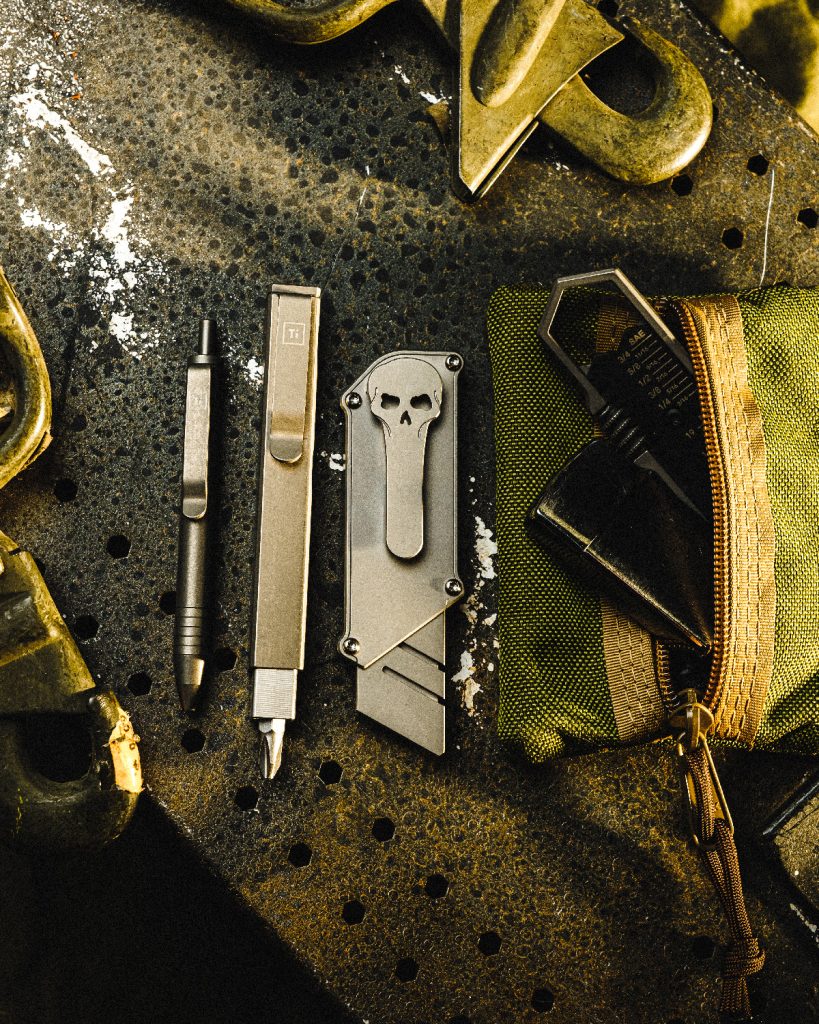
In the knife community, we carry additional EDC items for safety, survival, fidgeting, or utility. The most common EDC item used in the knife community is a folding knife, but some carry fixed blade knives. From flashlights and tactical pens to everyday carry folding knives, we (the knife community) usually have an additional item on our person. We’ll consider a few aspects of a knife when debating what to carry and show some of our favorites to choose from.
There are plenty of applications for using a knife in your daily life. Whether a lifelong knife carrier or just looking to start, at some point, you or someone else has asked what the purpose of carrying a knife even is. Many people in manual labor positions find themselves using knives every day to help facilitate them in doing their work. An excellent knife to open mail and letters will come in handy for someone in the corporate field.
For the anxious or busy-minded person, having a pocket knife to fidget with is very soothing. When you come home from a long day and have packages, use your stylish everyday folder to slice it open and retrieve your sought-after goods. The uses are endless for an EDC folder, from the outdoors to the indoors.
The construction of a knife can look beautiful, stylish, aggressive, sleek, simple, and artistic. A knife’s anatomy is constructed of the blade’s steel, locking mechanism, opening mechanism, handle material, pocket clip style, blade shape, and, lastly, blade grind. One ought to consider the specific characteristics of an everyday folding knife before finding the right knife for oneself or a friend.
The most common factors when considering blade steel are:

GiantMouse Nazca Exclusive, made from Bohler M390 for corrosion resistance and edge retention.
Steels come at various price points, depending on the cost of producing them and the cost for the knife company to work with them. Steel with high wear resistance is more costly to manufacture, as the knife company uses more abrasives to grind the knives. Steel high in carbides can’t be stamped out; it must be cut by a waterjet or laser, which takes time and is more expensive. Steel without these attributes are much less costly.
The most common lock types featured in folding knives are:
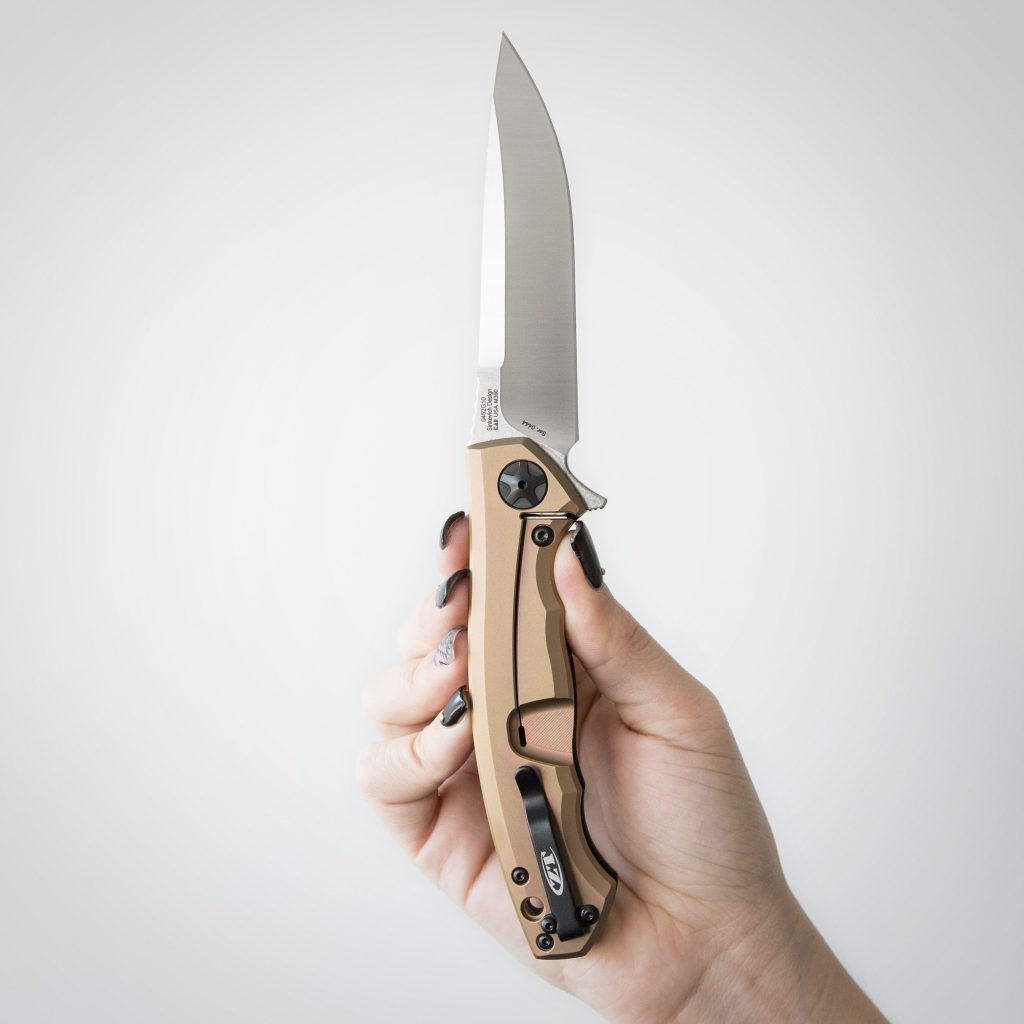
Remember that every knife lock type is sufficiently robust for general EDC use. The best systems tend to accentuate a one-handed operation for deployment and closing. If you want to learn more about locks, check out our Knife Lock Types Guide!
The most common openers featured in folding knives are:
Some knives are simple to open; some require a bit of skill. Whether you prefer a thumb stud or a flipper tab, knife opening mechanisms are designed to help you use your knife more effectively and efficiently for everyday occurrences.
The most common handles featured on folding knives are:
When we buy a new knife, it’s easy to consider the steel and shape of the blade, and rightfully so—the blade is what does the cutting! But use your knife enough, and you start to realize the importance of job-specific handle material. The best research is to get one in your hand and see how you like the feel, weight, and texture of the material.
The most common pocket clips featured on folding knives are:
Pocket clips are offered in tip-up and tip-down styles, which simply refers to where the tip of the knife is pointing in the closed position. The great thing about the plethora of knife choices today is you can find the perfect match for your pocket!
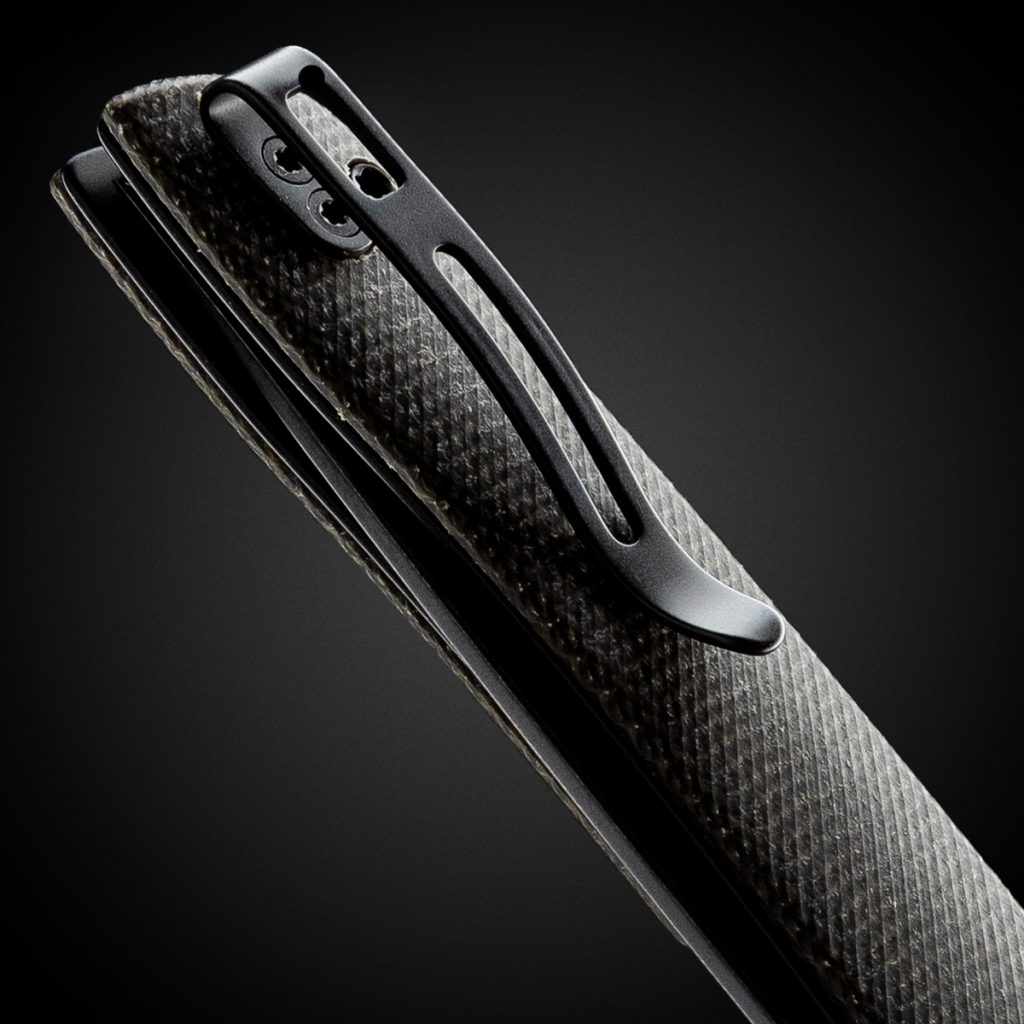
The most common blade shapes on any knife are:
When choosing your next new knife, there might be nothing more important than the blades shape. Consider the usage you will be putting your knife through, and you’re sure to pick a winner.
The most common blade grinds on any knife are:
Remember that when trying out a new blade, the steel should match the grind. For instance, if you’re looking at a convex ground axe, the steel should match in durability. Luckily, we deal with expert knifemakers who think of details like compatibility before the blade gets anywhere near our website.
A continuous debate within the knife community is which is a better EDC, a fixed blade or a folder. After going to Blade Show West 2022 in Salt Lake City, it was safe to assume that more people were carrying folding knives at a higher rate than fixed blade knives. Regardless of what we saw, there are plenty of reasons to carry a folding knife over a fixed one. Here are some of our side-by-side comparisons on folding and fixed blades as everyday carrying knives.
| LionSteel BestMan Slip Joint Knife Jade G-10 $119.95 |
LionSteel M4 Knife Jade G-10 $144.95 |
| Bohler M390 steel. Jade G-10 handle. Practically invisible in the pocket At just 2.24 oz., it’s perfect for any pocket or purse and serves all your daily needs without having to alter or add to your style. |
CPM M4 steel. Jade G-10 handle. Brown leather sheath with belt loop. In order to carry this everyday you’ll need to loop your belt through it to be secured to your person. At 6.46 oz. in weight, it’s not the lightest EDC option, but it is full-tang for full toughness. |
| Boker Plus Exskelibur II Knife Black G-10 $49.99 |
Boker Plus Nessmi Pro Exclusive Knife $59.95 |
| Stonewashed D2 blade. Black G-10 and stonewashed steel handle. Right hand, tip-up pocket clip. It weights just 1.90 oz. which makes it ultra-lightweight. Carrying this as an EDC will feel effortless. |
Black D2 steel blade. Black micarta handle. Leather belt sheath. Coming in at 3 oz. this is a lightweight fixed blade but again, requires a belt for you to be able to carry anywhere. |
| WE Knife Co. Banter Knife Black G-10 $108.80 |
WE Knife Co. OSS Knife Black G-10 $89.25 |
| Black CPM S35VN spear point blade. Dual thumb stud openers. Black G-10 handle. Recessed deep carry pocket clip. 2.61 oz. For this blade steel at this price, it’s a steal. Carrying around the sharpest blade in your pocket will have all your EDC tasks fearful. |
Stonewashed CPM 20CV dagger blade. Stonewashed steel handle with black G-10 inserts. Fitted Kydex sheath. At just 0.72 oz., this is incredibly lightweight, but again can only be carried on the outside of your person in a sheath or pouch. |
The biggest thing to consider is your everyday life and how a knife could benefit you. The argument for which is better, the folding EDC or the fixed blade EDC, will continue to happen no matter what. For some, the fixed blade is perfect for outdoor tasks requiring heavy wear and weather conditions. For a vast majority of indoor workers, a simple folding knife can accent the workplace and the work-life in a subtle yet effective way.
Since there are countless folding knives, deciding which brand to go with might be a bit overwhelming. Unlike all matching power tools for your garage, great EDC folding knives come from all brands. Some people may be picky, but you can’t go wrong with any folder from these top brands.
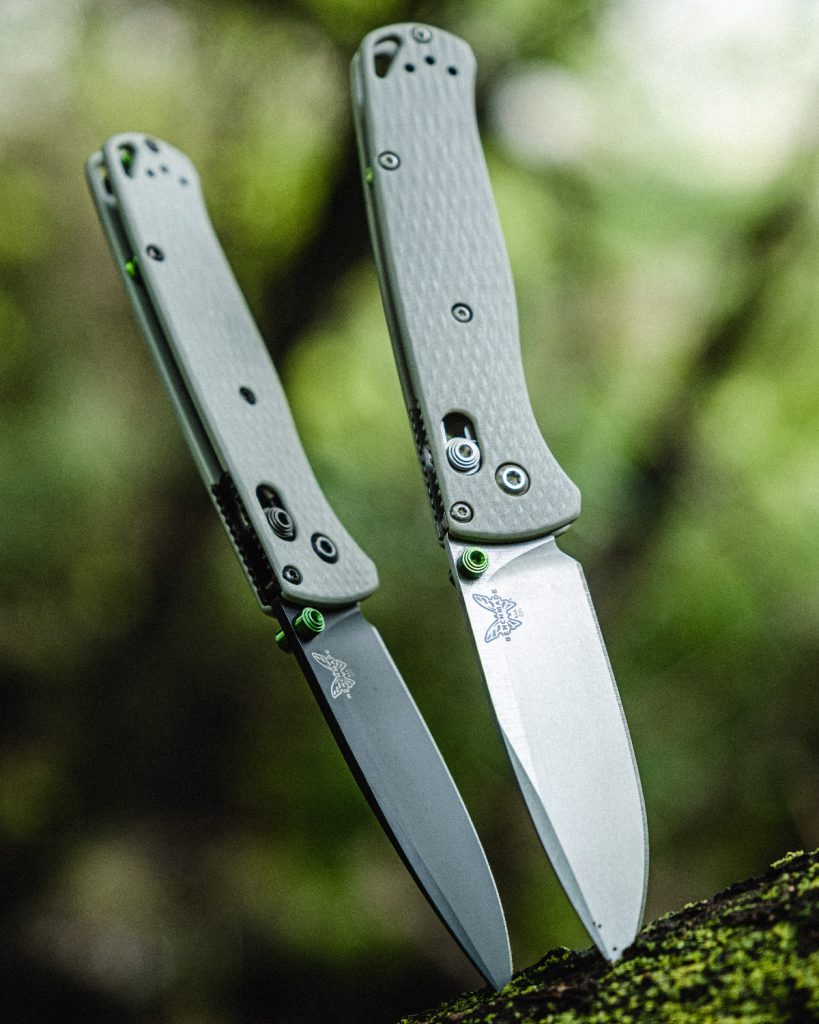
Benchmade Knives – Famous for their AXIS lock, every Benchmade is 100% made in the USA and comes with free LifeSharp maintenance. The Benchmade Bugout has become one of the ideal EDC knives for its light weight, premium materials, and customization.
Spyderco Knives – Spyderco released their first knife in 1981 and quickly became an EDC favorite for millions with the popularization of innovations like the Spydie Hole and pocket clip. Built from the edge up, Spyderco knives are functional, ergonomic, and practical. Today, you can find a Spyderco knife to suit nearly any need, from the ultra-portable Ladybug to the hard-use Manix 2. And with various blade steels and handle materials, there’s a perfect Spyderco for everyone.
WE Knife Co. – WE Knife Company has set a new standard in Chinese production knives since 2000. Their EDC pocket knives include premium materials like Bohler M390 blade steel and titanium/carbon fiber, with outstanding fit and finish at affordable pricing.
Boker Knives – With roots back to 1600’s Germany, Boker Knives, the “tree brand,” is a trusted maker of quality hunting, kitchen, and pocket knives. Boker’s automatic and folding knives offer high quality at an affordable price. From tactical to gentlemanly, Boker has it all!
Kizer Knives – Kizer Knives entered the pocket knife market in 2012 with a dedication to top-quality materials and advanced production processes. They single-handedly changed the reputation of Chinese-made knives and set a new trend for high-quality Chinese knife companies.
Everyone has their own opinion on what they deem the best folding EDC knife. We have our views as well, and here they are!
$195.50
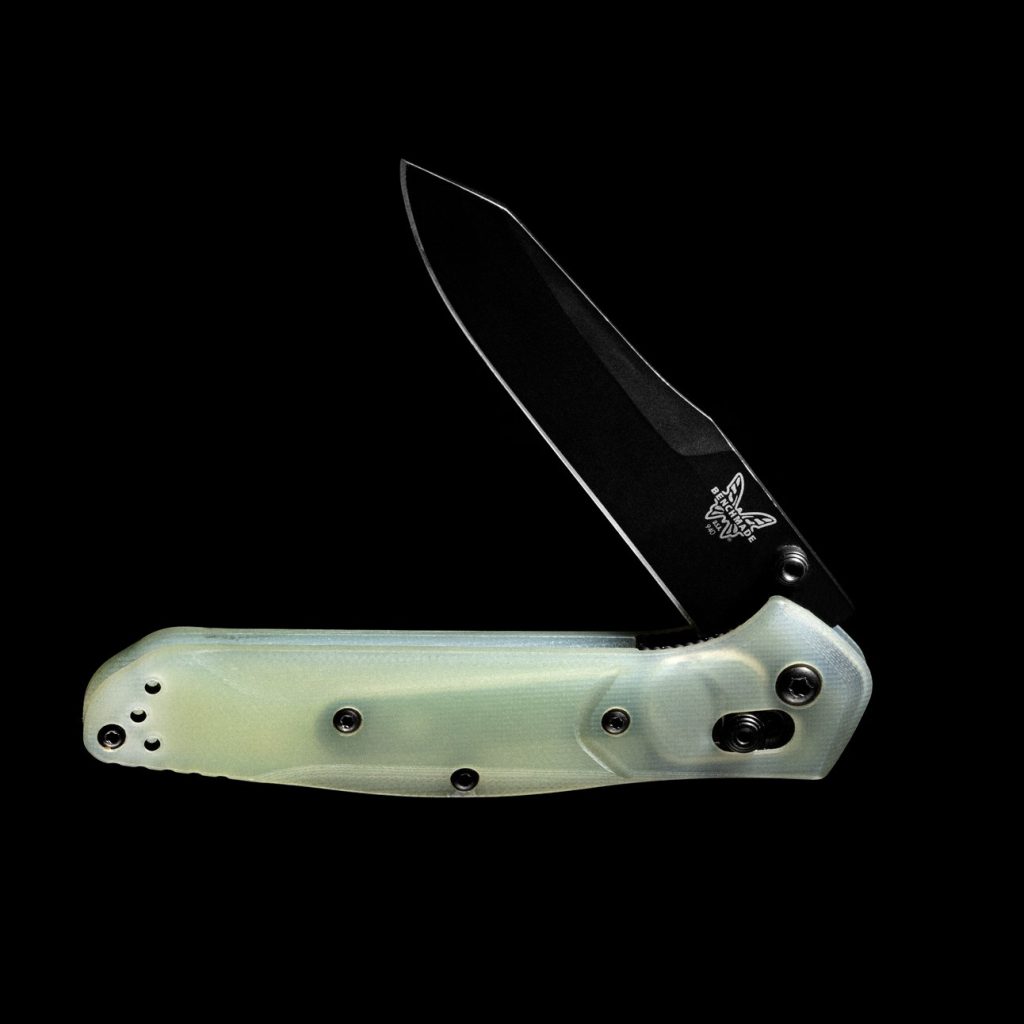
The Benchmade 940 Osborne has become a classic in the knife industry. Just about every knife enthusiast is familiar with it. A few years back, Blade HQ took a poll, and the community placed the 940 Osborne among the five knives everyone should own. Its rugged build, slim profile, and versatile design make it a perfect tool for every Benchmade knife aficionado.
$136.95

The Delica features spine jimping that extends from the ramp to the top of the handle. The Spyderco original thumb hole on the blade allows an ambidextrous one-hand opening for right or left-handers, and the phosphor bronze washers at the pivot make the blade action smooth. The Delica has lightweight FRN scales that utilize Spyderco’s patented Bi-Directional Texturing to keep your hand from slipping under pressure. The pocket clip is 4-way reversible for tip-up/down and left/right carry.
$64.95
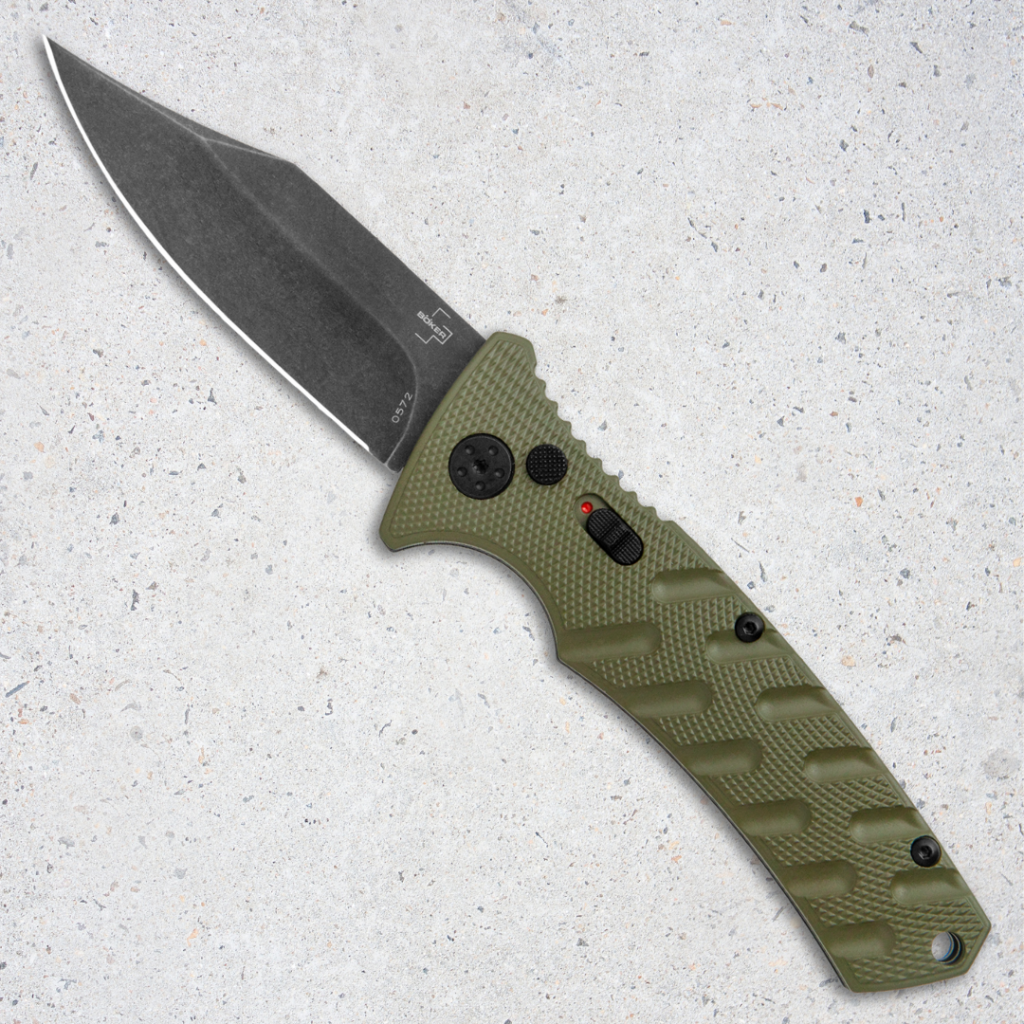
For a knife to be considered tactical, it must meet high expectations. It must be strong, easy, and fast to deploy, agile in combat, and efficient in utility. The Boker Strike meets and exceeds those high expectations and does so at a nearly impossible price to beat. Not only is the Strike a superb tactical knife, but it comes in several sizes, many colors, and a selection of blade styles. There is a perfect Strike model to put in any pocket, from combat uniforms to blue jeans. There are dozens of Boker Automatic Knives, each maximizing function, and value. No matter how you carry it, the Strike is ready for anything at the push of a button!
$144.00

In 2017, Benchmade shook the knife world with the release of the Bugout. It was the knife people didn’t know they were searching for. It was simple, practical, ergonomic, lightweight, had an ambidextrous lock and opener, and was made with quality materials; in the years since the Bugout has become one of the best-selling knives in history. Benchmade made the Bugout a knife for everyone, and no collection is complete without one. The Benchmade Bugout comes in two sizes and many colors and has excellent aftermarket customization options.
$35.95
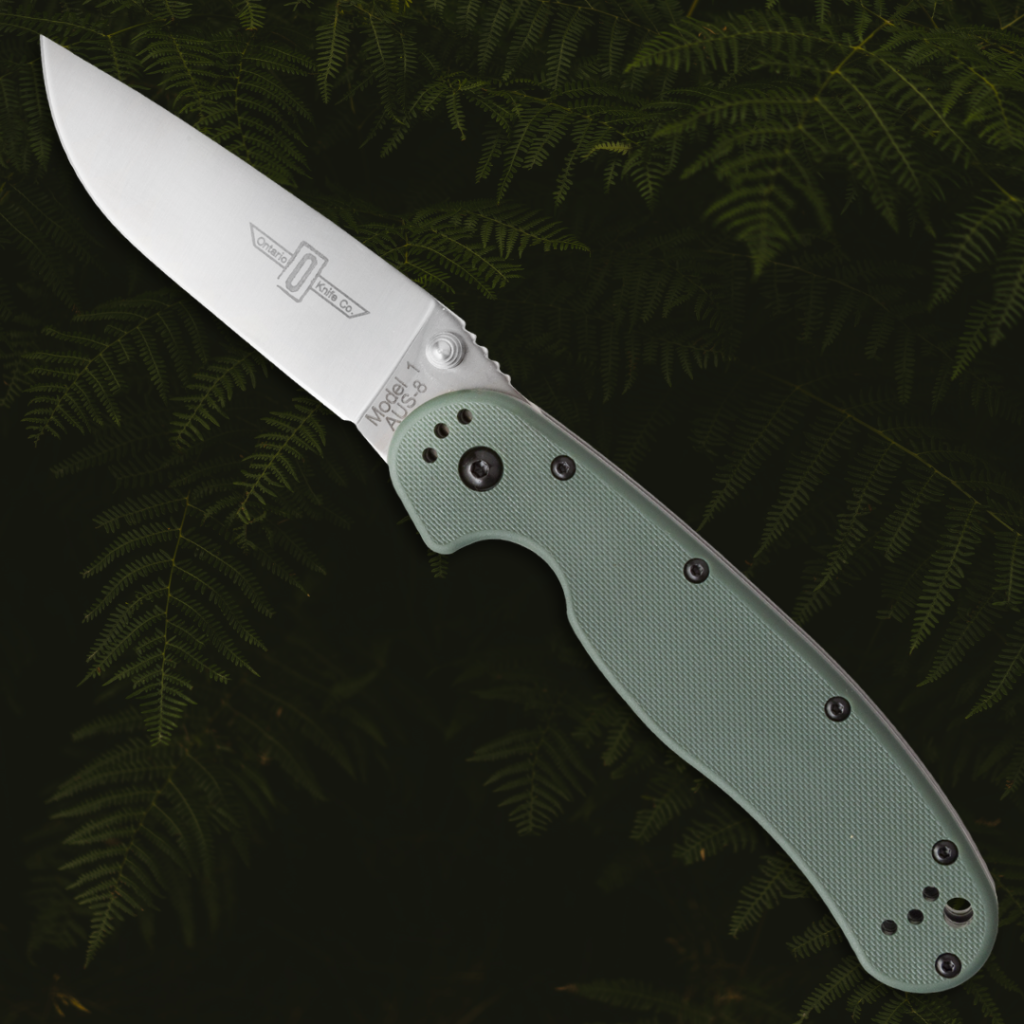
The Ontario RAT Model 1 is a superb design from Randall’s Adventure & Training manufactured by Ontario Knife Company (OKC). This knife is designed for comfort and performance, with an index finger groove on the handle to keep your hand where it should be and jimping on the blade’s spine for controlled cutting. The handle features textured scales with an open-built frame. The Ontario RAT Model 1 is a strong, high-quality knife at an unbelievable price!
With birthdays and holidays right around the corner, it is essential to know the many sales, deals, drops, and exclusive knives we will be featuring from now until the new year. Check out the Holiday Gift Guide for the best gifts for everyone on your list! Be sure you follow us on Instagram for new knives and future updates! Check out our YouTube channel for exciting videos with creators and our favorite knives. If you’re looking for fresh picks at affordable prices, watch our video on the best knives under $25!
 Copyright © 2024 Blade HQ. All rights reserved
Copyright © 2024 Blade HQ. All rights reserved